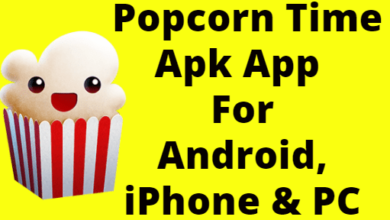What are Different Types of Water Pollution? – its Causes and Effects
Table of Contents
Types of Water Pollution
Guys! Do you know what water pollution is? Here, is an amazing fact that people are polluting water but they don’t think about it. Water is everywhere; it covers almost 70% of the earth’s surface.
I will discuss Water Pollution, its types, and its Effects in this posa fantastict. I will also explain how we can control water pollution.
Basically, water pollution (contamination of water by bacteria, parasites, chemicals, and trash) has become a major issue nowadays. People don’t have safe water to use. I am here to discuss water pollution and solutions to overcome that issue. Let’s discuss
What is Water Pollution?
Water Pollution can be defined as the contamination of the water due to the introduction of some harmful agents and chemicals in the water bodies. It is the contamination of water by some pollutants such as bacteria, parasites, chemicals, and trash like plastic.
Water is everywhere; it covers 70% of the earth’s surface. Water is the basic source of survival on Earth.
What are the different types of Water Pollution?
There are different types of Water Pollution described below:
- Groundwater Pollution
- Oil Spillages
- Microbiological Pollution
- Chemical Water Pollution
- Thermal Pollution
- Oxygen-Depletion Pollution
Groundwater Pollution
The groundwater comes from the earth’s surface through some stores called Aquifers. The fertilizers and pesticides are applied to crops and easily absorbed into the ground and also runoff during rainfall.
The groundwater becomes contaminated when the wastewater seeps down into the ground. When these harmful chemicals enter groundwater, they are often drawn from wells and boreholes, degrading water quality. Therefore, when pumping up groundwater sources, it must be tested and treated to ensure it is safe for drinking water supply and other human uses.
Oil Spillages
Water can be contaminated by accidental oil spills, transportation, leaks, and intentional spills. Oil spills can have a negative effect on the water environment and are very difficult to clean up; A single liter of oil can pollute a million liters of water.
Oil spills make up 12% of the oil that ends up in the world’s oceans. The rest of the oil pollution comes from shipping/transportation, drainage, and disposal. Most oil spills are localized, but even small amounts of oil can be dangerous to humans and marine life.
Once the oil enters the water, it quickly spreads to the surface, reducing the amount of oxygen and sunlight that can enter the water, preventing plants from photosynthesizing and suffocating fish. Water pollution from oil spills also attacks the feathers of sea birds; preventing them from flying and exposing them to ingesting oil when catching fish.
Microbiological Pollution
A microbiological pollution is a form of natural water pollution. It comes from microorganisms such as bacteria, viruses, and protozoa that can cause waterborne diseases such as cholera. This form of water pollution occurs in places where people drink untreated water.
Humans are very sensitive to this type of water pollution and healthy drinking water systems play an important role in eliminating microbiological contamination. If left untreated, the water causes serious health problems for people who drink the contaminated water and can kill fish and other aquatic life.
Chemical Pollution
Chemicals are the most common form of water pollution and many industries use chemicals that can enter water systems. These chemicals can be anything from metals and solvents in industrial activities to fertilizers and pesticides in the agricultural industry, to chemicals used in pest control operations.
When these chemicals enter the soil and water, they adversely affect the humans, animals, and fish that use these environments.
Chemical contamination of water in the aquatic environment is highly toxic to aquatic organisms, stunting growth, hindering reproduction, or causing death.
Thermal Pollution
Heat is considered a form of water pollution because it reduces the water’s ability to hold dissolved oxygen (DO). As the water temperature increases, the DO level decreases. Heat pollution also increases the size of fish and destroys brush and bridges.
An important source of pollution is power plants that pump cooling water into rivers. Temperature rise due to global warming is also considered a form of hydrothermal pollution.
Ozone Depletion Pollution
Another consequence of water pollution with nutrients is the lack of oxygen. If oxygen levels drop too low, all organisms that depend on oxygen for respiration will die and anaerobes will survive.
Because many anaerobes produce ammonia and other harmful toxins, this can make the water more dangerous for the aquatic organisms that live in these environments and for those who depend on their drinking water supplies.
Causes of Water Pollution
There are some major causes of Water Pollution that are contributing to and disturbing the normal water cycle:
Sewage is one of the causes of water pollution. Waste dumped into the ocean from homes and businesses can cause water pollution. Sewage causes many water-related diseases, such as diarrhea, which is a leading cause of death among children.
Industrial waste
Many companies discharge industrial waste, such as toxic chemicals, into waterways before treatment. This leads to water pollution. The release of toxic chemicals reduces the amount of oxygen in the water, causing pollution.
Solid waste landfill
Another major cause of water pollution is human waste. Dumping solid waste like plastic, cardboard, and Styrofoam pollutes the water and makes the water unusable. Mass collection of solid waste clogs waterways and leads to water pollution.
Radioactive waste
The release of radioactive waste into the sea is also one of the main causes of water pollution in the world today
What are the Health Effects of Water Pollution?
In short water pollution kills. According to a study published in The Lancet, 1.8 million people died in 2015. Contaminated water can also cause inflammation. About a billion people are affected by unsafe water each year. And low-income communities are disproportionately at risk because their homes are often located near the most polluting industries.
Waterborne pathogens, disease-causing bacteria, and viruses from human and animal waste are the leading cause of disease from contaminated drinking water.
Most people think that drinking water contamination only occurs in third-world countries, but even wealthy countries such as the United States are also responsible for accidental and/or illegal wastewater discharges introducing harmful organisms into waterways.
Accumulation of chemical contaminants in water, such as heavy metals, can lead to many health problems, such as cancer and hormonal disorders in humans after consumption. The increase in human health problems due to water pollution is putting an enormous strain on our healthcare system.
Final Words
So, you have read this post carefully. I have explained the types and effects of Water Pollution. You can get all information by reading this post. I have described some solutions to solve issues related to water pollution. If you have any question related to this post you can ask freely. Thank You!



